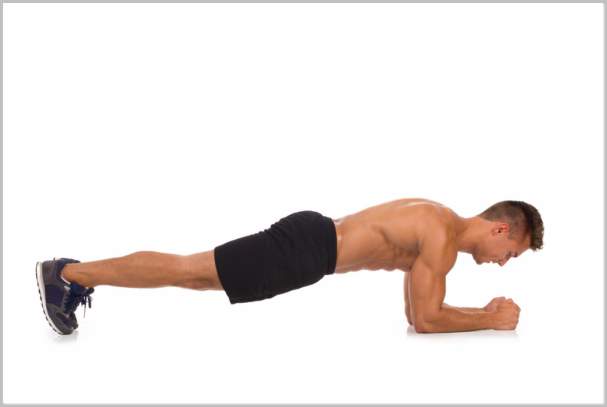Isometric and isotonic exercises are used every day, all over the country. Most of the time, when people work out both of these types of exercise are used in tandem.
The Difference:
Physical exercise involves muscle contraction. The terms isometric and isotonic refer to different types of muscle contraction.
Isotonics

Isotonic contractions are muscle contractions that change the length of the muscle. The change in length of the muscle results in the movement of a body part. Isotonic contractions occur because the force exerted by muscle contraction is greater than the external force against it.
Isotonic exercise is when the amount of resistance remains the same throughout the workout, but the muscle length changes. There are two types of isotonic exercise, concentric and eccentric. The most common type, concentric, is when the force the muscle creates is greater than the force the weight generates. An example of concentric isotonic exercise would be a bench press. When the weight is pushed away from the chest, the force the muscle uses is greater than the force of the weight. Eccentric isotonic exercise is when the force of the weight is greater than the force the muscle generates. An example of this is the fact that a person can set down an object that weighs much more than they have the capacity to lift. Eccentric isotonic exercise is the main cause for soreness and muscle injury. However, high tension levels created by eccentric contraction may cause greater muscle strengthening.
Isotonic exercises are more vigorous and burn calories faster. Exercises such as sit-ups, weight lifting, and squats involve isotonic contraction of the muscles. Most sports such as cycling, swimming, running, ball and racket games also use isotonic contractions of muscles. In our sedentary lifestyle, isotonic exercises are useful to keep our muscles in good condition and increase physical fitness.
Isometrics

Isometric contractions are muscle contractions where there is no change in the length of the muscle. The contractions occur because the force exerted by the muscle contraction is only equal to the opposing external force, such as gravity.
An example of an isometric contraction is when one grips something hard, for example a tennis racket. There is no movement of the arm or the racket, but the muscles in the arm contract to provide a force to keep the racket in place against gravity. An example of an isometric exercise is to hold a weight in front of one’s body in a fixed position. The arm would tire after a few minutes. Activities that involve isometric contraction of the muscles include gymnastics, climbing and wrestling.
Isometric exercise focuses on keeping the angle of the joint and the length of the muscle being worked static, or constant, through the workout of choice. There are two types. Yielding isometric means that the lifter applies only enough pressure to the weight to cancel the resistance, causing the weight to be neither dropped or lifted. Overcoming isometric means that no matter the amount of pressure applied by the lifter, the weight simply does not move. Overcoming is a more pure isometric, due to the fact that the weight is an immovable force.
The origin of isometric exercise traces back thousands of years. It’s principles can be found in yoga and certain martial arts, such as kung fu. Isometrics can often be confused as dynamic self resistance or calisthenics. Doctors may use isometrics to tell the difference between various heart murmurs, or to prevent Disuse Syndrome in patients who have had an immobilized limb due to a cast. NASA conducted a research study to find out whether isometrics could prevent muscle atrophy in astronauts living in zero gravity.
Isometric exercises are recommended in physiotherapy to heal injured muscles without putting too much stress on nearby joints. For example, isometrics of the quadriceps muscles are recommended for people with osteoarthritis of the knee. The quadriceps muscles are the most important muscles in the support of the knees. Isometric exercise of the quadriceps is done by stretching the leg up while in a sitting position and straightening the knee.
Knowing the difference between isometric and isotonic exercises may help to decide how a person wants to build muscle or shed the pounds. A gymnast might find the isometrics to be more suitable to their needs, while a professional body builder may like the isotonics.

